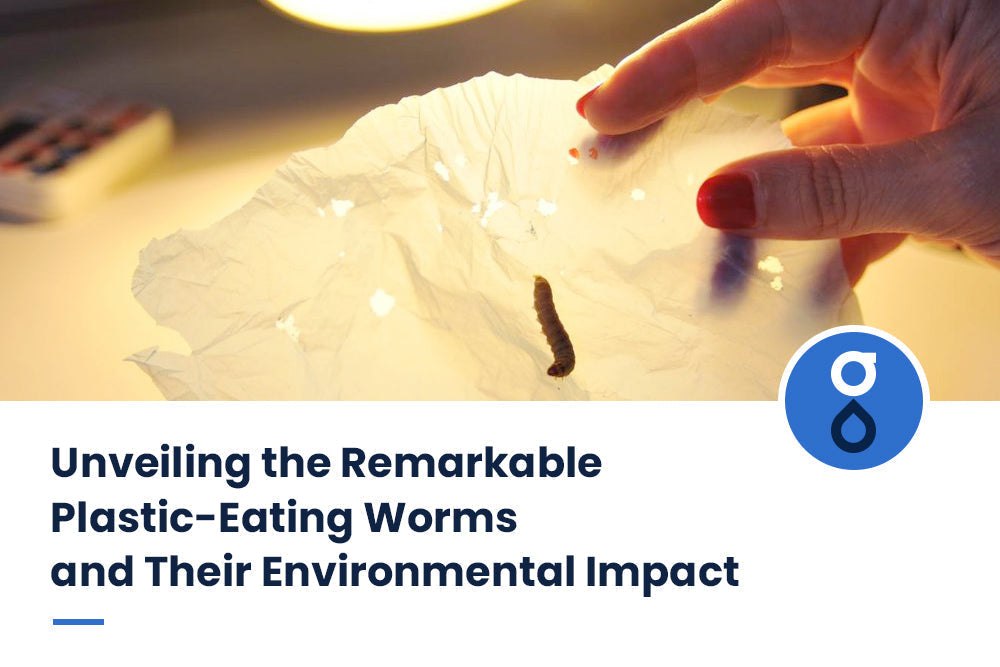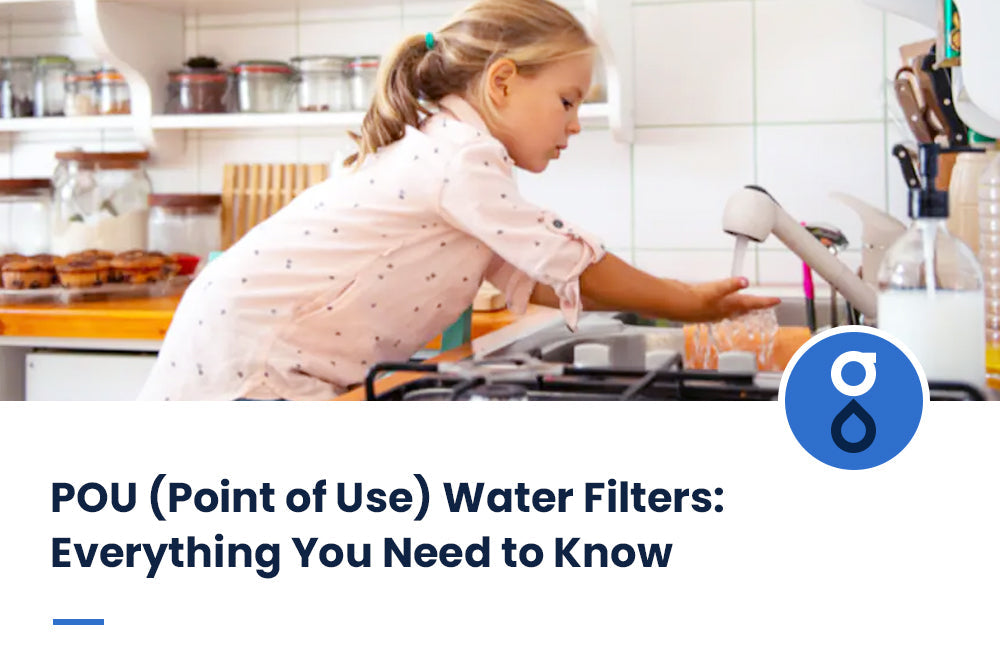Table of Contents:
What are plastic-eating worms?
Where can plastic-eating worms can be found?
How do plastic-eating worms work?
The benefits of using plastic-eating worms
Potential drawbacks of plastic-eating worms
Are plastic-eating worms a viable solution?
FAQs
Conclusion
Did you know that the world produces over 300 million tons of plastic every year? That's equivalent to the weight of the entire human population! Unfortunately, only a tiny percentage of this plastic waste is recycled, and the rest ends up in landfills or our oceans, where it can take hundreds of years to decompose.
But what if there was a solution to this global problem? Enter plastic-eating worms. What are plastic-eating worms? Well, they are a type of caterpillar with the unique ability to consume and break down certain types of plastic. These worms have been found to eat through polyethylene, a type of plastic commonly used for shopping bags and packaging materials.
The discovery of plastic-eating worms has raised hope that we may have found a way to reduce plastic waste and its harmful environmental impact. So, let's dive deeper into this fascinating topic and explore the potential benefits and drawbacks of using these worms to solve our plastic problem.
What are plastic-eating worms?

The plastic-eating worms are mealworms, the larvae of darkling beetles. Researchers have found that these mealworms can consume and break down polystyrene, a plastic commonly used in packaging materials.
The use cases for these plastic-eating worms are vast. They can help reduce plastic pollution in our environment by breaking down plastic waste into harmless materials. Research findings have shown that mealworms can consume up to 35% of their weight in polystyrene and excrete biodegradable waste that can be used as fertilizer.
This helps reduce plastic waste and provides a sustainable solution for waste management. The environmental impact of plastic waste is a growing concern, and plastic-eating worms could be a game changer.
Where can plastic-eating worms be found?
Plastic-eating worms aren't your typical garden variety of earthworms. They're a special breed of mealworms that have been bred specifically to feed on polyethylene, a type of plastic commonly found in shopping bags and packaging materials. You might think these worms could only be found in laboratories, but they've been spotted elsewhere.
Here are three locations where plastic-eating worms have been found:
1. Recycling centers: These facilities are designed to process and sort recyclable materials. Some researchers have introduced plastic-eating worms into the mix to see if they can help break down plastic waste more efficiently.
2. Landfills: Unfortunately, much of our plastic waste ends up in landfills, which can sit for hundreds of years before decomposing.

3. Research facilities: Plastic-eating worms are also found in research facilities where scientists study their behavior and capabilities. These facilities are often the first places to make and test discoveries before being introduced to the broader world.
How do plastic-eating worms work?
The plastic-eating worms, known as waxworms, produce an enzyme called polyethylenease. This enzyme can break down the chemical bonds in polyethylene, the most common type of plastic found in single-use plastic bags.
The mechanism explanation behind the ability of these worms to consume plastic is fascinating. The polyethylenease enzyme breaks down the long-chain polyethylene molecules into shorter-chain molecules, which the worms can drink as a food source.
The benefits of using plastic-eating worms

The benefits of using plastic-eating worms are immense. These worms can consume a wide range of plastics, including polyethylene, commonly used in packaging materials, and polystyrene, used in foam cups and takeout containers. Additionally, they're environmentally friendly and don't emit harmful gases or byproducts during the breakdown process. This makes them a sustainable solution for waste reduction.
Potential drawbacks of plastic-eating worms
Although plastic-eating worms offer a sustainable solution to plastic waste reduction, potential drawbacks need to be considered. One of the main concerns is the environmental impact of releasing these worms into the wild.
While they may be effective at breaking down plastic, they could also disrupt the natural ecosystem if they start consuming other materials or outcompete native species. Additionally, if the worms are not properly contained, they could spread to areas where they were not intended to be, causing unintended consequences.
Another potential issue with plastic-eating worms is ethical concerns. While it may seem humane to address plastic waste, it is essential to consider the worms' well-being. There is a risk that these worms could be genetically modified to make them more effective at breaking down plastic, which raises questions about the ethics of genetically modifying living organisms. It is also possible that large-scale breeding and farming of these worms could have negative consequences for their welfare.
Are plastic-eating worms a viable solution?
Plastic-eating worms could potentially make a significant impact in reducing plastic waste and saving our planet. While ongoing studies are still to determine the feasibility of using these worms, initial tests have shown positive results. Here are some reasons why plastic-eating worms could be a viable solution:
- Plastic alternatives are only sometimes readily available or affordable to everyone, especially in developing countries. Plastic-eating worms offer a more accessible and cost-effective solution to reduce plastic waste.
- Recycling methods aren't always efficient and effective, as not all types of plastic can be recycled. Plastic-eating worms can break down a wide range of plastics, including those that are difficult to recycle.
- The environmental impact of plastic waste is devastating, as it pollutes our oceans and harms wildlife. Plastic-eating worms offer a sustainable solution to reduce plastic waste and significantly mitigate its negative environmental impact.
While plastic-eating worms offer a promising solution, it's important to note that this isn't a one-size-fits-all solution. Government policies and consumer responsibility also play a crucial role in reducing plastic waste. Governments can implement regulations to promote plastic alternatives and encourage responsible waste management practices. Consumers can also make a difference by reducing their plastic consumption and adequately disposing of plastic waste.
FAQs
What kind of plastic can plastic-eating worms digest?
Plastic-eating worms can digest polyethylene, around 40% of all plastic produced worldwide.
Are there any potential health risks associated with plastic-eating worms?
One of the leading health concerns is the toxicity of the breakdown products of plastic. When these worms break down plastic, they release toxic chemicals that could harm humans or other living organisms.
How long does it take for plastic-eating worms to digest plastic?
These plastic-eating worms can digest a single piece of plastic in just under an hour. The digestion process involves microbial breakdown, which means the plastic is broken down by microorganisms in the worm's gut.
Conclusion
So, now you know about plastic-eating worms. These creatures have the power to consume plastic waste and potentially reduce our impact on the environment. While they may seem like a miracle solution, it's important to remember that they are not a cure-all. They offer a potential solution, but we must also address the root cause of plastic pollution by reducing our plastic consumption and improving waste management.
Plastic-eating worms symbolize hope in a world where we often feel powerless against the environmental challenges we face. They remind us that even small creatures can have a significant impact and that we each have the power to make a difference.
So let's continue to learn about and support innovative solutions like these worms while also taking action in our own lives to reduce our plastic footprint. Together, we can create a brighter future for ourselves and the planet.
















